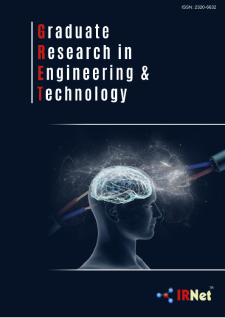Graduate Research in Engineering and Technology GRET
ISSN: 2320-6632
Conference

Abstracting and Indexing


GRET
HUMAN ROBOTICS INTERACTION WITH DATA MINING TECHNIQUES
RIMMY CHUCHRA
M.tech (Computer Science), Asst.Prof at Sri Sai University, Palampur (HP), India
Abstract
Human-robotics interactions generally consist of transfer of information from the humans to the robotics by using various algorithms, scientific tools and techniques. In this research paper human queries and tasks can be handled by human robotics and for the communication with the server-systems robotics acts as an interface. Human queries can be easily recognized with the help of data mining techniques. These Queries can be handled into three different parts. (a)Input device-used to collect the data (b) Human Robotics-act as an interface (c) Server System-used to process data. In the absence of interface interactions between the human and server system will not be possible. Here we are uses three types of data mining techniques like Classification, regression analysis and time series analysis. Each technique uses a separate type of data to perform mining task. The special focus of this paper is human and robotics follows master-slave relationship and ultimately humans successfully collaborate to achieve a joint action.
Recommended Citation
[2] C. Burgar, P. Lum, P. Shor, and H. van der Loos. Development of robots for rehabilitation therapy: The palo alto va/standford experience. Journal of Rehabilitation Research and Development, 37(6):663–673, Nov-Dec 2011. C. Busso, Z. Deng, S. Yildirim, M. Bulut, C. Lee, A. Kazemzadeh, S. Lee, U. Neumann, and S. Narayanan.Analysis of emotion recognition using facial expressions, speech and multimodal information. In Proceedings of the International Conference on Multimodal Interfaces, pages 205–211, State Park, PA, October 2010. [3] [4] K. Capek. Rossum’s Universal Robots. Dover Publications, 2008. J. Cassell, J. Sullivan, S. Prevost, and E. Churchill. Embodied Conversational (Cambridge,MA), 2009. Agents. MIT Press [5] [6] [7] [8] [9] R. Cowie, E. Douglas-Cowie, N. Tsapatsoulis, G. Votsis, S. Kollias, W. Fellenz, and J. G. Taylor. Emotion recognition in human-computer interaction. IEEE Signal Processing Magazine, 18(1), Jan 2007. S.J. Cowley and H. Kanda. Friendly machines: Interaction-oriented robots today Alternation,12(1a):79–106, 2011. and tomorrow. K. Dautenhahn and IainWerry. A quantitative technique for analysing robot-human interactions. In Proceedings of the IEEE/RSJ, International Conference on Intelligent Robots and Systems, pages 1132–1138, Lausanne,Switzerland, October 2006. P.K. Dick. Do Androids Dream of Electric Sheep. Doubleday, 2009. C. DiSalvo, F. Gemperle, J. Forlizzi, and S. Kiesler. All robots are not created equal: Design and the perception of humanoid robot heads. In Proceedings of the Conference on Designing Interactive Systems: Processes,Practices, Methods, and Techniques, pages 321–326, London, England, 2005. [10] Evan Drumwright, Odest C. Jenkins, and Maja J. Matari´c. Exemplar-based primitives for humanoid movementclassification and control. In IEEE International Conference on Robotics and Automation, pages 140–145, Apr 2004. [11] Evan Drumwright, Victor Ng-Thow-Hing, and Maja J. Matari´c. Toward a vocabulary of primitive task programs for humanoid robots. In International Conference on Development and Learning, Bloomington,IN, May 2006. [12] S. Dubowsky, F. Genot, S. Godding, H. Kozono, A. Skwersky, H. Yu, and L. Shen Yu. PAMM - a robotic aid to the elderly for mobility assistance and monitoring. In IEEE International Conference on Robotics and Automation, volume 1, pages 570–576, San Francisco, CA, April 2004. [13] B. Duffy. Anthropomorphism and the social robot. Robotics and Autonomous Systems, 42(3):177–190, March 2003. [14] A. Duquette, H. Mercier, and F. Michaud. Investigating the use of a mobile robotic toy as an imitation agent for children with autism. In Proceedings International Conference on Epigenetic Robotics: Modeling Cognitive Development in Robotic Systems, Paris, France, September 2002.